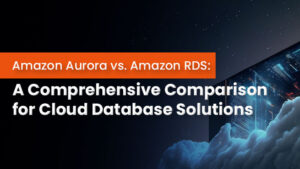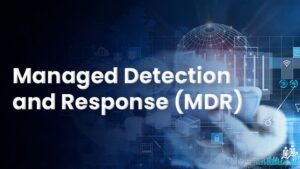Introduction
5G, the most recent version of cellular technology, provides faster speeds, lower latency, and more capacity for more devices than 4G. Although carriers focus most of their 5G marketing dollars on attracting consumers, businesses will benefit the most.
5G will enable businesses to create new experiences and interact in novel ways, transforming how we work and play and solving numerous long-standing problems, some of which have yet to be identified. Excitement about the potential propels the 5G hoopla and executives’ worries of falling behind.
This article will cover Enterprise 5G, its uses, and its benefits.
If you are considering taking wireless technologies and want to start your career in this domain, IPSpecialist is the best place to learn. Explore our Courses NOW!
What is 5G?
5G is a fifth-generation cellular technology that can enable multigigabit data rates far beyond the capabilities of traditional landline networks. While the theoretical speed of 20 Gbps is appealing, the low latency of 5G five milliseconds or less is even more so for enterprise applications such as augmented reality, IoT, location awareness, and branch connection.
What Is Enterprise 5G?
Enterprise 5G is a dedicated wireless LAN solution that satisfies a company’s unique requirements. This enables an enterprise to reap the benefits of 5G, which include the following:
- Speed up the transmission (up to 10 times 4G)
- Expand the network’s capacity (Up to 10 times more capacity than 4G)
- Extremely low latency (less than 20ms round trip)
- Support for low-power devices and sensors has been improved
How is Enterprise 5G different from 5G?
In a corporate 5G concept, the enterprise has complete network control. The organization owns the infrastructure, radio devices, mobile core, and management software. This contrasts sharply with commercial 5G carrier services and managed service providers.
Previously, businesses could only build private mobile networks by partnering with commercial carriers like AT&T or Verizon. Through this paradigm, businesses had limited control over usage fees, network availability, and data security. Private organizations could not establish their own 4G and 5G networks due to complexity and spectrum licensing requirements.
Enterprises may now build their own private 5G networks, similar to how they own and control Wi-Fi networks. Explore our courses now!
Working of 5G
The millimeter-wave spectrum is used by 5G to carry signals over a huge network of small cell sites situated on light poles and building roofs, among other places (30 GHz to 300 GHz). A millimeter-wave may only travel small distances due to its shorter wavelength and is sensitive to weather and barriers such as buildings, walls, coated windows, and flora. Millimeter-wave technology is most effective in densely crowded locations or open venues, such as factories or stadiums, where low-powered small cell stations can be deployed to gain line of sight and amplify radio transmissions.
Less crowded locations will also benefit from 5G, but they will have to use lower frequency bands, such as low band and mid-band, which will enable fewer devices at potentially slower speeds and higher latency. To fully use 5G’s capabilities, several companies are concentrating their enterprise 5G efforts in dense areas or open venues for the time being.
Enterprise 5G Benefits
5G performance is combined with comprehensive application-specific controls intended for enterprise contexts in enterprise 5G architecture. These features enable businesses to scale swiftly, increase uptime, and provide ultra-reliable service to their employees and consumers.
Compared to their 4G predecessor, 5G wireless networks offer incredible speed, dependability, and capacity. The improvement in 5G performance is so enormous that it will be used to power new services and products. Autonomous vehicles, remote surgeries, and robots demand ultra-low latency performance, which 5G provides.
Device identification and authentication in the cellular world are made by the SIM card rather than a network password. Due to this single contrast, enterprise 5G is a more secure alternative by default. Many people are familiar with the SIM cards we use to activate our new phones.
The same method is utilized in a corporate 5G context to manage cell phones, tablets, laptops, and sensors. Provisioning can be done remotely with eSIM, which connects devices to the network with a simple QR code, and the device cannot see or join the network without a physical or digital SIM.
While 5G chipsets are slightly more expensive than Wi-Fi cards, the greater range and capacity of 5G means less infrastructure is required to cover the same amount of ground. For the same level of coverage, this implies less hardware, maintenance, and management.
The barrier to entry has been lowered due to advancements in plug-and-play cellular technology, allowing businesses to reclaim control and save money over time by managing it internally. This control removes carrier surcharges, rate spikes without warning, and overage charges in commercial cellular networks.
Enterprise 5G works on its frequency on the CBRS band, allowing interference-free communication. Businesses can establish private 5G networks without worrying about interfering with current Wi-Fi networks in their area. This enables Wi-Fi and enterprise 5G to coexist, with 5G designated for the most mission-critical applications and services.
5G also uses numerous bands to ensure that its signal can safely cover long and small distances. This is perfect for businesses that want to connect their satellite offices to the main campus while also providing service in smaller areas such as hallways. Businesses can, for example, use 5G in the low band to receive updates from a remote job site while using the high band in the office for ultra-fast speeds.
SD-WAN and 5G
Organizations can use 5G and SD-WAN to manage wired and wireless connections to remote and home offices. For example, one insurance company used SD-WAN to handle the cable, DSL, fiber, and LTE communications at its 10,000 locations. 5G services might easily be added to the mix once 5G is generally available.
SD-WAN could also be effective in assisting sites in switching between 4G and 5G connections, automatically selecting the best link for the application’s requirements and traffic conditions. Some industries, such as retail, may use SD-WAN to provide 5G as a primary option for pop-up locations, with alternative connections via MPLS and the internet.
The 5G Power Business
5G delivers innovation opportunities beyond today’s workplace constraints, enabling new ways to work, think, and address traditional business concerns.
When considering the usefulness of 5G for corporate transformation, certain essential common traits arise, such as:
- It can execute any process remotely, no matter how crucial it is.
- It has complete real-time control over all corporate processes.
- Its operations have been computerized.
- It takes advantage of computing resources, running applications on the edge where appropriate.
- It provides an inherently better level of security without sacrificing overall performance.

The Future of Enterprise 5G
Enterprise 5G is all about innovation and applications. What happens next is determined mainly by how businesses use 5G’s speed, low latency, and capacity to integrate AI, machine learning, real-time analytics, and other improvements into their operations.
Conclusion
5G will undoubtedly bring significant enterprise opportunities in the future. 5G’s core functional features will open up many possibilities, including improved service delivery, decision-making, and end-user experience. By 2035, this will have generated $13.2 trillion in global economic value, with 22.3 million employment created in the 5G global value chain.








